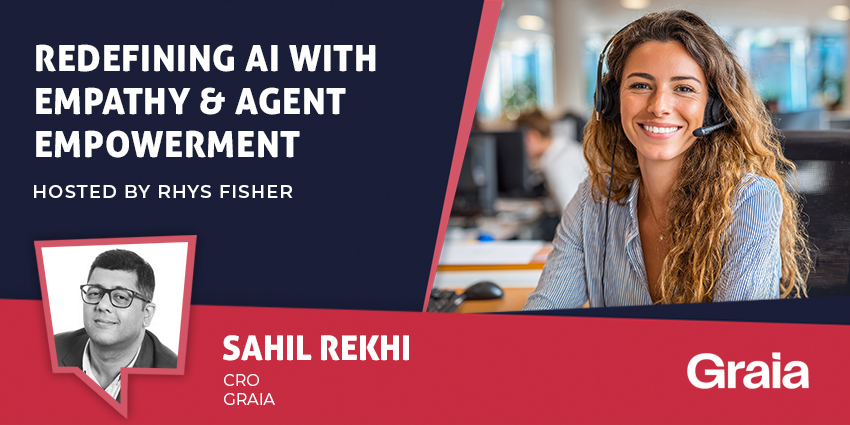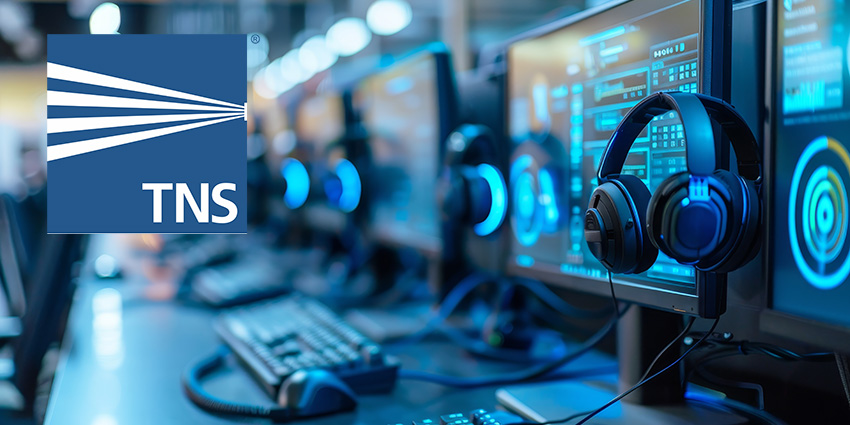At the forefront of most analyst reports evaluating the enterprise CCaaS market, two vendors will typically lead the way: NICE and Genesys.
Still, in a crowded market – with hyperscalers, CRM, and UCaaS providers entering the space – these two companies stand out.
Central to this market leadership are both providers’ global support services, deep ecosystems, and – of course – rich portfolios.
Indeed, each offers access to omnichannel communications, data management, workforce engagement management (WEM), journey orchestration, and AI solutions.
Yet, which is the best platform overall?
NICE CXone vs Genesys Cloud: Key Considerations for Selecting a CCaaS Platform
Choosing a CCaaS solution is typically a long process, and there are many analyst studies helping guide organizations toward cutting-edge solutions.
Genesys and NICE have both ranked as leaders on the Gartner Magic Quadrant report for CCaaS platforms thanks to their robust AI tools, scalability, and ease of use (among other reasons).
But, when selecting a CCaaS solution, business leaders need to think about more than just industry rankings. Key points to consider include:
- Alignment with Business Needs & Cloud Strategy – Determine the appropriate cloud solution (public, private, or hybrid) to narrow down potential CCaaS vendors.
- The Vendor Ecosystem – Assess compatibility and integration capabilities with existing CRM and UCaaS platforms. Consider integration requirements with other enterprise technologies, including ITSM software, BI tools, and conversational AI.
- The Contact Center Role – Distinguish between the need for added contact center functionality to UCaaS versus a dedicated, pure-play CCaaS solution for mission-critical service.
- Core CCaaS Features – Evaluate support for desired customer engagement channels (e.g., voice, chat, email, social media). Also, ensure system scalability to accommodate growth and prioritize an intuitive UI for agents and administrators.
- Support Services – Verify support services that meet the language requirements of global operations.
- Customization Capabilities – Determine the level of customization required and if a CCaaS vendor with strong CPaaS ties is necessary for developer-driven customization.
NICE CXone vs Genesys Cloud: A Comprehensive Comparison
Aside from being chosen as CCaaS Gartner Magic Quadrant leaders, both NICE CXone and Genesys Cloud solutions have earned numerous additional plaudits for key components of their CCaaS offerings.
For instance, NICE started life as a workforce optimization (WFO) vendor and moved into CCaaS after acquiring inContact in 2016. It still retains its strong WFO capabilities and offers fantastic AI-powered analytics and automation features.
Genesys is well-known for its user-friendly interface, built-in collaboration and UCaaS tools, and flexible, API-driven customization options.
Both solutions also have strong rankings on G2, each earning a score of 4.3 out of 5 stars overall (as of March 2025).
On Gartner Peer Insights, they both earn a score of 4.6 out of five stars.
NICE CXone vs Genesys Cloud: Pricing and Plans
From a pricing perspective, NICE CXone can be a little more expensive to implement than Genesys Cloud. However, options are available for more budget-focused companies.
Plans range from around $71 per month for the CXone Mpower digital assistant to $249 per month for the CXone MPower ultimate suite, with full orchestration or human and AI agents.
NICE offers a sixty-day free trial for beginners and access to solutions that might cost extra from other vendors in premium plans, like advanced WFO tools.
Genesys Cloud CX plans start at $75 per month, per user, with access to analytics, reporting, AI tools, and voice capabilities.
More advanced plans range up to $240 per agent per month, with access to more digital channels, outbound campaigns, and omnichannel routing.
However, on top of that $240 per agent per month plan, brands may pay for extra AI tokens to leverage the vendor’s full AI toolkit.
Contact centers can also mix and match features, choosing options like “digital channels” as an add-on for cheaper CCaaS plans.
Overall, Genesys Cloud might be a slightly more cost-effective solution for mid-sized teams prioritizing built-in collaboration tools and ease of use. However, companies that want to go all-in on AI may end up paying more.
NICE CXOne vs Genesys Cloud: Key Features Comparison
Since both NICE CXone and Genesys Cloud are omnichannel, AI-driven CCaaS solutions, they offer many overlapping features but stand out in slightly different areas.
Customer Engagement and Communication Tools
Both NICE CXone and Genesys Cloud support inbound and outbound omnichannel communications, with solutions for both live and virtual agents.
The platforms enable unlimited voice calling, access to AI-driven chatbots, and call and agent screen recording features. They also offer various dialers (predictive, progressive, and preview) for outbound campaigns.
NICE delivers advanced VoIP calling capabilities with IVR, automated callbacks, ring groups, and call queuing, alongside support for 30 digital channels (such as SMS, social media, email, and chat).
Genesys supports most communication channels and IVR features with flexible routing capabilities. Plus, it offers campaign management tools for marketing and sales teams and native team collaboration tools.
Workforce Engagement Management (WEM) & Agent Assist
NICE leads the CCaaS market in its WEM portfolio, particularly when it comes to WFM.
It offers flexible tools for forecasting and scheduling powered by over 40 different predictive algorithms. NICE also has its purpose-built Enlighten AI suite to enhance workforce operations.
While Genesys does have its own AI tools and agent-assist features, NICE has created more than 25 AI-powered tools specifically focused on improving agent productivity and engagement.
That said, Genesys does perhaps provide NICE with its closest competition in terms of WEM capabilities.
For instance, it presents advanced solutions for gamification and editable AI-generated summary assistants.
Both vendors deliver live KPI alerts, real-time agent coaching tools, and solutions for performance tracking and agent training.
They also offer customer survey tools and omnichannel interaction recording for training purposes, giving businesses more freedom to create custom upskilling strategies.
Data Analysis and Reporting
Data analytics now goes beyond simple call statistics. Enterprises want actionable insights into customer sentiment, agent performance, bottlenecks in service delivery, and beyond.
Both NICE CXone and Genesys Cloud offer a range of intelligent solutions here that centralize data and extract insight.
Moreover, they offer organizations a single interface for accessing speech and text analytics, customer intent insights, and omnichannel customer feedback.
NICE CXone presents more than 90+ pre-built reports (compared to Genesys Cloud’s 30+ templates) for those with advanced reporting needs.
Additionally, it offers access to business process analytics to monitor the performance of specific contact center workflows.
Meanwhile, Genesys Cloud enhances user experiences with agent empathy scoring, advanced customer journey mapping capabilities, and AI-powered engagement dashboards.
Reliability, Security, and Customer Support
NICE CXone and Genesys Cloud promise 99.99 percent uptime, end-to-end encryption, single sign-on (SSO), and multi-factor authentication (MFA).
Ultimately, that means both tools are reliable for companies investing in a sturdy ecosystem for customer support.
Both platforms also ensure compliance with a range of industry standards, such as HIPAA, PCI-DSS, GDPR, SOC 2, and FedRAMP.
Moreover, both offer organizations incredible onboarding support, training resources, and end-to-end customer service.
NICE CXone gives users direct access to 24/7 customer support, on-site training and webinars, and automated compliance audits (for peace of mind).
Meanwhile, Genesys delivers global support across multiple channels, as well as professional services and consulting add-ons for larger teams.
Users can also expect end-to-end monitoring and encryption from both platforms.
User Experience and Integrations
From a user experience perspective, some companies on verified review sites – like G2 – suggest that NICE CXone has a slightly higher learning curve.
However, it has a reputation for robust migration and onboarding support. Plus, companies have a lot of freedom to customize their ecosystem according to their specific needs, with more than 140+ pre-built integrations.
Genesys Cloud supports more third-party integrations than NICE through its AppFoundry marketplace (with more than 500 third-party connectors). It can also be slightly easier to use and comes with built-in unified communication features for workplace collaboration.
The biggest downside is that Genesys integrations for advanced reporting and WFO capabilities can cost companies extra, even though they’re already built into many NICE plans.
Both solutions support APIs and SDKs while presenting oven-ready integrations with platforms like Zendesk, Zoom, Microsoft Teams, Salesforce, and more.
NICE CXOne vs Genesys Cloud: The Pros & Cons
Every organization’s needs differ based on industry vertical, team size, and customer engagement strategies. The choice between NICE CXone and Genesys Cloud hinges on each company’s priorities.
NICE CXone
NICE CXone reigns as the leader in workforce engagement management (WEM).
For example, it offers near-flawless forecasting accuracy through its 40+ predictive algorithms and provides robust analytics with 90+ pre-built reporting templates.
Large enterprises handling thousands of daily interactions can also leverage Enlighten AI to automate conversations, deliver agent assistance, enhance contact center data, and more.
Pros:
- Industry-leading AI-powered WFM and scheduling
- Advanced analytics and customizable reports
- Flexible pricing options for a range of businesses
- Excellent customer service and onboarding support
Cons:
- Slightly steeper learning curve
- Fewer native collaboration tools
Genesys Cloud
Genesys Cloud could be the ideal choice for organizations focused on customer engagement and internal collaboration.
Its intuitive interface, built-in chat, and video conferencing allow agents and supervisors to collaborate without leaving the platform.
AI-driven coaching, coupled with straightforward analytics, makes Genesys Cloud an appealing choice for organizations that want to streamline the agent experience, too.
Pros:
- Seamless omnichannel engagement tools
- Built-in UCaaS features and collaboration tools
- User-friendly interface and integrations
- Impressive gamification capabilities
Cons:
- Limitations on analytics and reporting features
- Less sophisticated WFM capabilities
NICE CXone vs Genesys Cloud: Making the Right Choice
Ultimately, both NICE CXone and Genesys Cloud feature-rich CCaaS platforms with many overlapping capabilities and features, advanced AI tools, and deep customization options.
NICE CXone is perhaps the better option for companies that want to combine omnichannel customer service and robust customer journey analytics.
It’s also great for people-centric contact centers looking for market-leading WEM tools alongside versatile AI assistants.
Yet, Genesys Cloud may be the better choice for companies that prioritize digital engagement, hybrid team collaboration, and ease of configuration.
Join the CX Community That Values Your Voice
This is your space to speak up, connect, and grow with thousands of CX leaders. Share your voice, influence what’s next, and learn from the best in customer experience. Join the conversation today.







